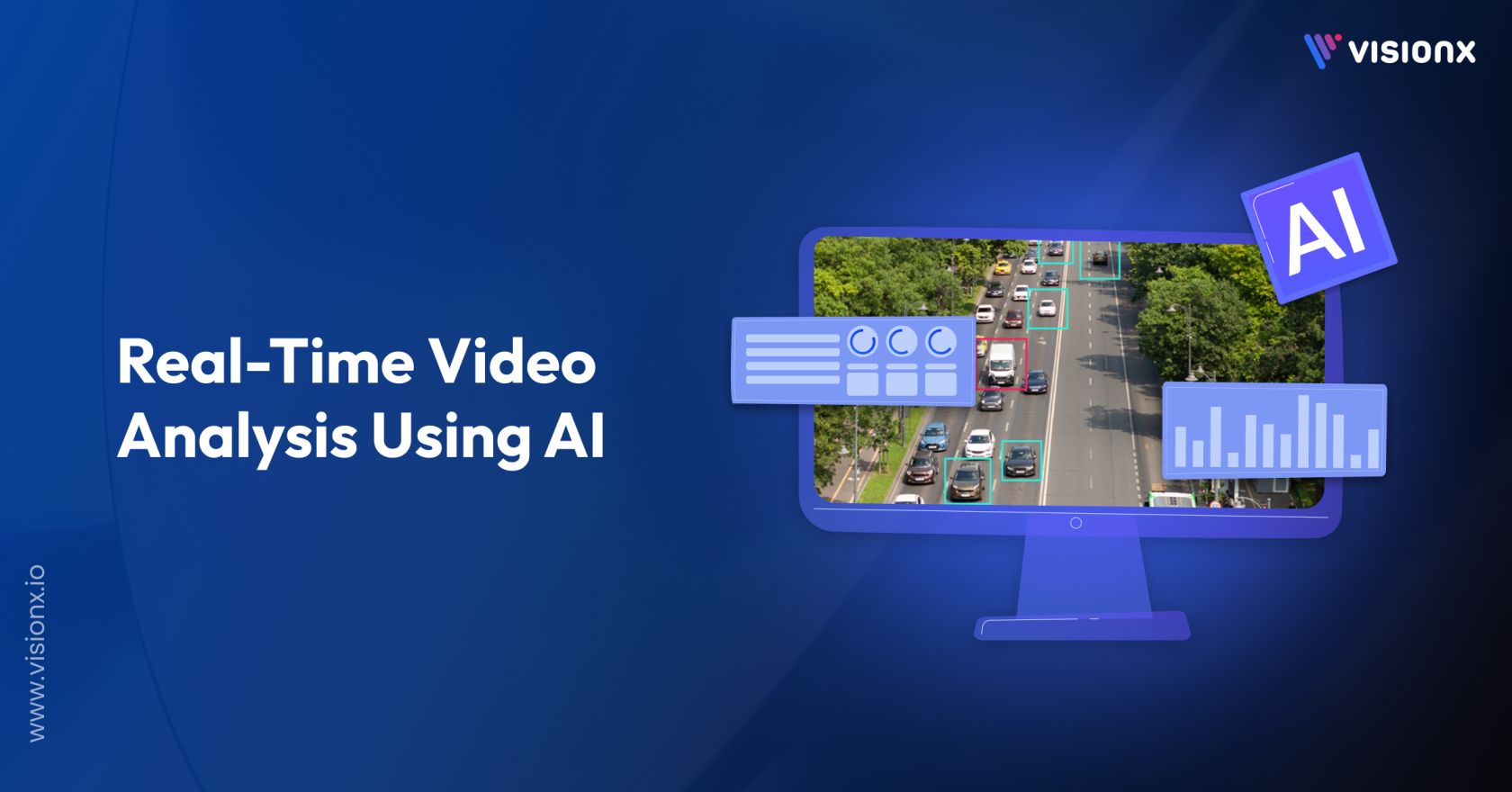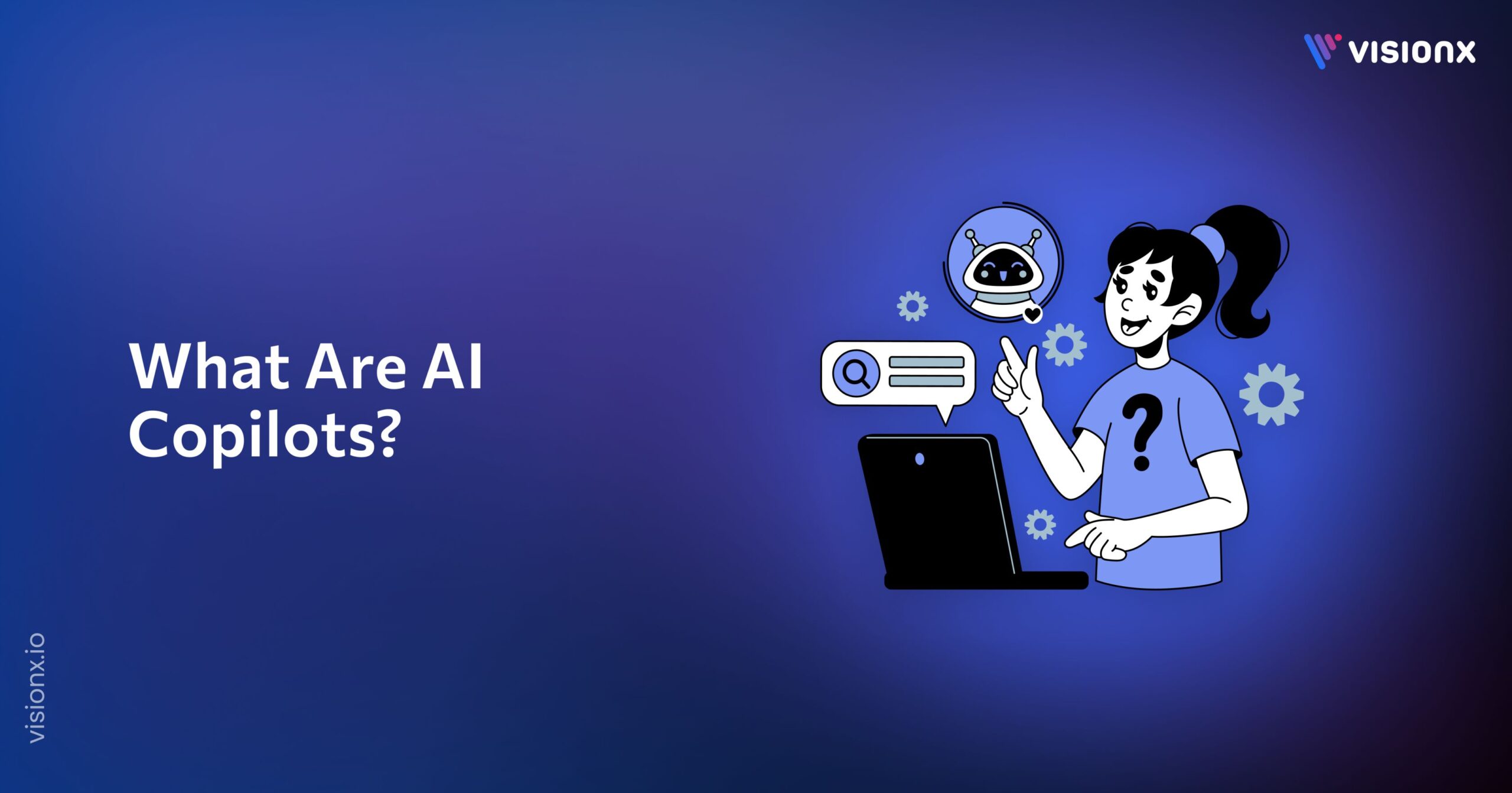About 90% of video footage is never watched. Most of it just sits in storage. And by the time you notice something important, it might already be too late. An AI video analyzer supports fixing the issues. It helps you catch threats, strange behavior, or key events as they happen. You won’t have to rummage through recordings.
Video analysis AI turns regular video into real-time insight, helping you make faster, smarter decisions. So if you’re looking for a way to stay on top, this kind of real-time video analysis is a step that you can’t afford to miss.
This post explains what a video analysis AI tool does, how it works, and how to set one up. You’ll learn about the core video analysis technologies behind it, how AI video monitoring works across different industries, and how to use the best AI video analyzer for your setup.
What is AI Video Analyzer?
An AI video analyzer uses artificial intelligence to extract meaningful information from video content. It uses advanced technologies such as computer vision, speech recognition, and machine learning. Intelligent video analytics’ primary objective is to automatically identify spatial and temporal events in videos.
It can analyze video frames and recognize objects and activities. It transcribes audio and interprets sentiment. This kind of tech is changing fields like surveillance, sports, entertainment, healthcare, transportation, and marketing.
In fact, according to a report, video content accounts for 82% of online traffic. This huge number shows how much of a critical tool an AI video analyzer has become for businesses. Businesses often use video content analysis AI and AI-based video analytics to get real-time results from their footage. Some even build custom video analytics projects for specific goals.
The system can detect anomalies, identify specific individuals or items, count people or vehicles, and generate metadata for search or audit. Some platforms offer support for edge devices, which helps reduce latency, as well as cloud-based APIs that provide system-wide access. These analyzers help improve security, optimize operations, and reduce manual labor.
Industry Trends: The Rise of AI Video Analysis
If your business uses video for security, operations, or engagement, keeping up with AI video analysis trends is important. This can help you gain a competitive edge and cut down on manual work.
The AI video analysis market is growing fast. This rise comes from new technology and a greater need for smarter video tools. MarketsandMarkets expects the AI in video surveillance market to rise from $5.6B in 2023 to $16.3B by 2028. This means a growth rate of 23.7% each year.
- AI video features gain traction: At NAB 2024, Bitmovin introduced new tools. These include Super Resolution, auto subtitles, and AI video descriptions. Its session interpreter won a Best of Show award. These features are now built into many AI-based video analytics tools and AI video monitoring systems.
- Agentic AI takes shape: Systems now act with little human input and adapt to real-time context and user behavior. Many modern video analysis AI systems can now predict actions and respond independently.
- SEO shifts to video quality: New AI search tools now assess video depth, which may turn video quality into a key SEO factor by 2025. If you’re working on a video analytics project or testing a video generator AI, this trend will help you rank better.
| Trend | Description |
| Market Growth | AI in video surveillance to reach USD 16.3B by 2028 (CAGR 23.7%) |
| Agentic AI | AI systems now act with minimal human input and adapt to context |
| Video as SEO Signal | AI search engines now assess video quality as a ranking factor |
| Advanced Tools | Tools like Super Resolution, auto subtitles, and generative video descriptions |
Core Technologies Behind AI Video Analytics
When you use a video analysis AI, you get smart insights. Whether you’re using AI video analyzer software for security, the retail industry, or even analyzing YouTube videos, these core components handle the complex tasks.
1. Computer Vision and Deep Learning:
With AI video analysis, your system can see and understand what appears in each frame. It uses convolutional neural networks (CNNs) to detect objects, track people, and spot key actions. You don’t have to watch every second. Your system does that for you and tells you when something matters. Most AI that can analyze videos operates in this manner.
2. Machine Learning Algorithms:
Your AI gets better with more data. It uses machine learning to find patterns and spot unusual behavior. It also tracks trends across different videos. The system helps you find what matters most, whether it’s security footage, customer flow, or media content.
3. Edge Computing:
You don’t want delays. That’s why AI video analyzer software often uses edge computing. It processes data close to the camera, so you get alerts fast, save on bandwidth, and keep sensitive footage more secure. You stay informed without waiting.
Some teams need a video analytics project that works right away. Others are still testing tools. In both cases, it helps to use the best AI video analyzer with strong edge support and cloud access. A few platforms also provide the best AI video generator API that connects easily with your current system.
How AI Video Analyzer work?
Thinking about using AI video analyzer software for your business? Here’s a quick overview of how it works to help you decide.
1. Video Capture and Ingestion
You start by connecting your existing IP cameras or video feeds. The system pulls live or recorded video using standard protocols, so you don’t need new hardware.
2. Preprocessing
The software gets the video ready for analysis. It extracts frames, resizes them, and cleans up the input. This helps the video analyzer AI models understand the video better.
3. Inference Engine
This is where the AI models generate video insights in real-time for businesses. It scans each frame in real time. This helps detect objects, people, or specific events. So, you can respond faster and confidently.
4. Post-processing and Output
The results show up on your video feed. Alerts and reports are made automatically. Store and search this data for audits, security reviews, or more video analysis AI.
Applications of AI Video Analysis
AI video analysis is highly versatile and supports a wide range of industries through automated detection, tracking, and pattern recognition. Many of these use cases are built on top of video content analysis AI and real-time AI video monitoring systems.
- Retail
Retail video analytics helps stores track how people move, where they pause, and what products they notice. This gives teams insight into layout, staffing, and product setup. A good AI video analyzer can flag patterns that lead to better sales or smoother flow.
- Surveillance
AI video detector systems enhance security by tracking individuals, identifying suspicious actions, and monitoring crowds in real time. With AI video analyzer software, you can receive instant alerts and improve response times to threats.
- Sports
Analysts and coaches rely on video analysis AI tools to break down player movements, evaluate tactics, and assess performance. These tools can process different types of videos to generate insights like ball trajectory or fatigue indicators.
- Entertainment
Streaming platforms use AI video analytics to deliver personalized content, create highlight reels, and evaluate viewer behavior. This level of AI-based video analytics helps services like Netflix boost engagement and revenue through personalized recommendations.
- Medical Research
In healthcare, video content analysis supports diagnostics by reviewing surgical procedures, identifying anomalies, and improving treatment plans, often detecting patterns that humans might miss.
- Transportation
With machine learning, AI tools monitor live traffic, detect collisions, and adjust signals to optimize flow. These systems reduce congestion and enhance road safety in smart cities.
- Marketing
Marketers use AI video analyzer tools to assess ad impact and viewer engagement. By analyzing video content, AI reveals which scenes perform best, helping shape more effective campaigns and creative strategies. Some teams also use AI video generation tools to test creative variations.
Statistics and Market Insights
The growth of AI video analysis is supported by compelling data:
- The global AI market is valued at approximately $391 billion, with the AI video generator market at USD 554.9 million in 2023.
- The AI video market is projected to grow at a CAGR of 35.3% from 2024 to 2030.
- 83% of companies consider AI a top priority in their business plans.
- 48% of businesses use AI to leverage big data effectively, highlighting its role in data-driven decisions.
- Regionally, Asia Pacific held a 31.40% market share in 2023, with North America, Germany, and the Middle East & Africa expecting CAGRs of 20.3%, 20.5%, and 20.6%, respectively, from 2024 to 2030.
Easy-to-Follow Implementation Steps For AI Video Analyzer
To successfully deploy an AI video analyzer in your environment, you’ll need to follow a few key steps, starting from hardware selection to full system integration.
- Define goals and key use cases for video analysis AI
- Select suitable hardware (e.g., IP cameras, edge devices)
- Set up the software stack (AI video analyzer, storage, APIs)
- Train and deploy AI-based video analytics models based on your video needs
- Integrate the system with existing infrastructure (CCTV, cloud, dashboards)
- Configure alerts, outputs, and reporting tools
- Test the setup using sample video footage
- Monitor system performance and tune for accuracy
- Scale and optimize based on results and feedback
Real-Time Performance in AI Video Analyzer Systems
To get fast and accurate results from your AI video analyzer, you must focus on real-time performance. This helps you act without delay and opens the door to more in-depth video content analysis.
1. Batch vs. Stream Processing
You can choose between batch and stream methods. Batch handles stored video in chunks, while stream processes each frame live. For real-time use, stream offers faster action and better awareness. Stream gives you instant detection, ideal for tasks like threat alerts or crowd control. Most modern AI video monitoring setups rely on streaming to reduce response times.
2. Latency Control
Apply methods like model quantization, pipeline split, and edge-based AI to cut delay. These steps help your system respond without lag. With lower latency, your team reacts faster and avoids operational slowdowns.
3. Scalability Support
Set up your system to support many video feeds at once. Use load split and cloud or edge units to ensure your analyzer handles high demand with ease. This setup helps your business expand without system failure or data loss.
Common Challenges And How to Deal with Them
Some tools work well on paper but cause problems in real use. Here are a few common issues and how to deal with them.
1. Slow Alerts
Some AI video analyzer tools miss key moments or flag them late. This causes delays. Edge-based tools fix this by running close to the camera. That keeps alerts fast and reliable.
2. High Cost
Many full AI-based video analytics setups cost too much. Start with fewer feeds and use a free video content analysis API if possible. Add more once the system proves its value.
3. Too Much Data
Video feeds flood teams with raw footage. A smart video analysis AI tool cuts through the noise. It tags key clips and skips low-value content to save time and storage.
Future Trends Businesses Should Know
As adoption grows, your business can benefit from the next wave of innovation in AI video analyzer technology. These trends aim to improve efficiency, accuracy, and real-time decision-making across industries.
Integration with IoT Devices
Stronger IoT connectivity will allow your AI video analyzer to sync with sensors, machines, and smart devices. This integration enhances data flow, enabling faster and more precise insights across facilities, vehicles, and public spaces.
Advancements in AI Models
Next-gen video analysis AI models will offer higher accuracy, faster inference, and better performance on limited hardware, ideal for scaling without large compute costs. These upgrades also support more responsive video analysis AI solutions across industries.
Cloud and Edge Hybrid Solutions
Hybrid setups will combine cloud flexibility with edge reliability. You can process video near the source for real-time insight while using the cloud for storage, system updates, and global coordination.
How Can VisionX Help?
Ready to go beyond basic surveillance? VisionX has the tools for real-time insights you need. VisionX has deep expertise in AI solutions. We help you build smart systems that go beyond recording. They can actually understand and respond. You get models that scale with deep learning. They support both edge and cloud deployment. Plus, they offer optimized performance.
You get help with everything. This includes picking the right hardware and creating custom AI video analyzer software that meets your needs. Want to track activity, detect threats, or monitor customer flow? VisionX provides solutions designed for your environment. Whether you’re in retail, healthcare, security, or content creation, we’ve got you covered.
Need fast alerts, smooth integration with your current setup, or even an AI video analyzer API? VisionX has the team, the tech, and the know-how to make it happen. You stay ahead with AI that sees what matters.
FAQs
Is there an AI that can analyze videos?
Yes, there are several AI systems that can analyze videos. These tools use computer vision, machine learning, and deep learning to detect objects, track movements, recognize activities, and generate insights from video footage. They’re used in industries like security, healthcare, retail, and entertainment.
Can AI review a video?
Absolutely. AI can review both live and recorded videos to identify patterns, detect anomalies, summarize content, or flag important events. This reduces the need for manual viewing and allows faster, more accurate decision-making.
Can ChatGPT-4 analyze video?
No, ChatGPT-4 cannot directly analyze video content. However, it can help interpret or summarize video transcripts, explain how video analysis systems work, or assist in designing AI video analysis workflows. For actual video frame processing, specialized computer vision tools are required.
Can AI transcribe a video?
Yes. AI-powered transcription tools can extract spoken words from video and convert them into text. These tools use automatic speech recognition (ASR) and natural language processing (NLP) to generate accurate transcripts, which are useful for captions, summaries, and accessibility.
About Author

M. Waqas Mushtaq is the Co-Founder and Managing Director of VisionX, whose passion for innovation fuels the company’s growth. Under his strategic direction, VisionX promotes a culture of excellence, solidifying its position as an industry leader.


